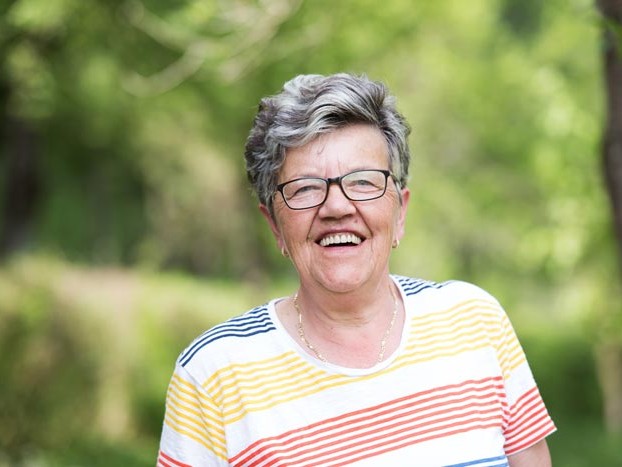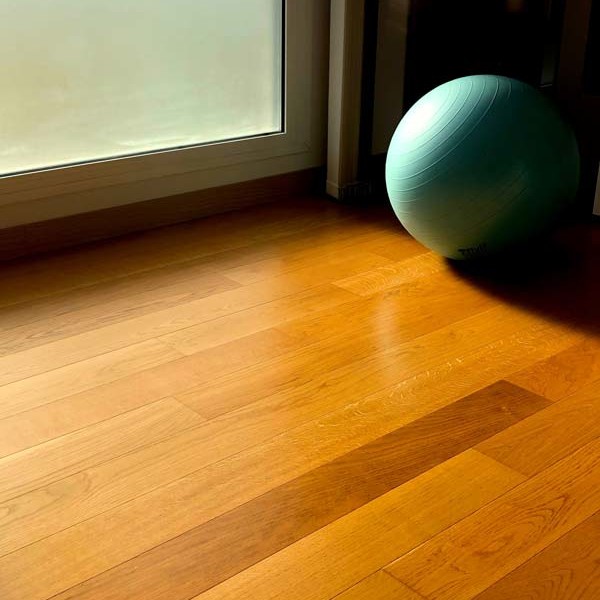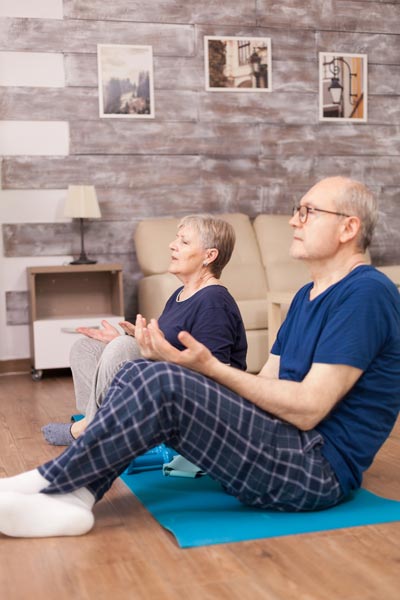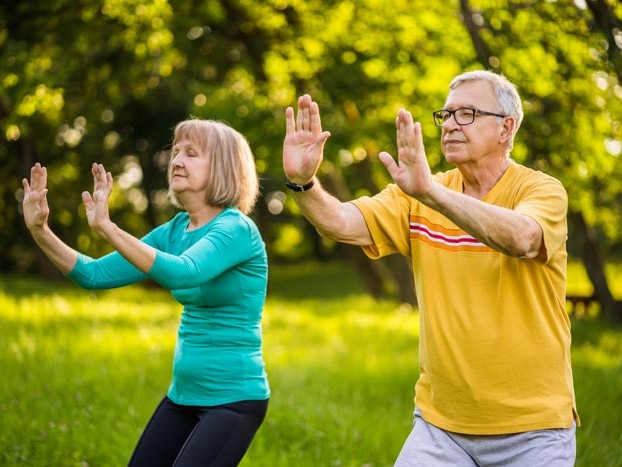You can significantly reduce your risk for falls by staying fit, making sure your home environment is hazard free and asking your physician to review your medications on a regular basis. For additional guidance and resources, contact our CARES team at 253-288-5800 or askthevrfa@vrfa.org.

Falls at home
Each year, thousands of older Americans fall at home. Many of them are seriously injured, and some are disabled. In 2011, nearly 23,000 people over age 65 died and 2.4 million were treated in emergency departments because of falls. Falls are often due to hazards that are easy to overlook but easy to fix. This checklist will help you find and fix those hazards in your home. The checklist asks about hazards found in each room of your home. For each hazard, the checklist tells you how to fix the problem. At the end of the checklist, you’ll find other tips for preventing falls.
“Making changes in our home to prevent falls is good for us and for our granddaughter when she comes to visit.”
FLOORS:
Look at the floor in each room
Q: When you walk through a room, do you have to walk around furniture?
▢ Ask someone to move the furniture so your path is clear
Q: Do you have throw rugs on the floor?
▢ Remove the rugs or use double-sided tape or a non-slip backing so the rugs won’t slip.
Q: Are there papers, books, towels, shoes, magazines, boxes, blankets, or other objects on the floor?
▢ Pick up things that are on the floor. Always keep objects off the floor.
Q: Do you have to walk over or around wires or cords (like lamp, telephone, or extension cords)?
▢ Coil or tape cords and wires next to the wall so you can’t trip over them. If needed, have an electrician put in another outlet.

STAIRS AND STEPS:
Look at the stairs you use both inside and outside your home.
Q: Are there papers, shoes, books, or other objects on the stairs?
▢ Pick up things on the stairs. Always keep objects off stairs.
Q: Are some steps broken or uneven?
▢ Fix loose or uneven steps.
Q: Are you missing a light over the stairway?
▢ Have an electrician put in an overhead light at the top and bottom of the stairs.
Q: Do you have only one light switch for your stairs (only at the top or at the bottom of the stairs)?
▢ Have an electrician put in a light switch at the top and bottom of the stairs. You can get light switches that glow.
Q: Has the stairway light bulb burned out?
▢ Have a friend or family member change the light bulb.
Q: Is the carpet on the steps loose or torn?
▢ Make sure the carpet is firmly attached to every step, or remove the carpet and attach non-slip rubber treads to the stairs.
Q: Are the handrails loose or broken? Is there a handrail on only one side of the stairs?
▢ Fix loose handrails or put in new ones. Make sure handrails are on both sides of the stairs and are as long as the stairs.

KITCHEN:
Look at your kitchen and eating area.
Q: Are the things you use often on high shelves?
▢ Move items in your cabinets. Keep things you use often on the lower shelves (about waist level).
Q: Is your step stool unsteady?
▢ If you must use a step stool, get one with a bar to hold on to. Never use a chair as a step stool.
BATHROOMS:
Look at all your bathrooms.
Q: Is the tub or shower floor slippery?
▢ Put a non-slip rubber mat or self-stick strips on the floor of the tub or shower.
Q: Do you need some support when you get in and out of the tub or up from the toilet?
▢ Have grab bars put in next to and inside the tub and next to the toilet.
BEDROOMS:
Look at all your bedrooms.
Q: Is the light near the bed hard to reach?
▢ Place a lamp close to the bed where it’s easy to reach.
Q: Is the path from your bed to the bathroom dark?
▢ Put in a night-light so you can see where you’re walking. Some night-lights go on by themselves after dark.
“I put a lamp on each side of my bed. Now it’s easy to find the light if I wake up at night.”


Other Things You Can Do to Prevent Falls
▢ Do exercises that improve your balance and make your legs stronger. Exercise also helps you feel better and more confident.
▢ 10 Have your doctor or pharmacist look at all the medicines you take, even over-the-counter medicines. Some medicines can make you sleepy or dizzy.
▢ Have your eyes checked by an eye doctor at least once a year and update your glasses.
▢ Get up slowly after you sit or lie down.
▢ Wear shoes both inside and outside the house. Avoid going barefoot or wearing slippers.
▢ Improve the lighting in your home. Put in brighter light bulbs. Florescent bulbs are bright and cost less to use.
▢ It’s safest to have uniform lighting in a room. Add lighting to dark areas. Hang lightweight curtains or shades to reduce glare.
▢ Paint a contrasting color on the top edge of all steps so you can see the stairs better. For example, use a light color paint on dark wood.
▢ Keep emergency numbers in large print near each phone.
▢ Put a phone near the floor in case you fall and can’t get up. Think about wearing an alarm device that will bring help in case you fall and can’t get up.
Other Safety Tips
Ask your doctor or pharmacist to review all the medicines you take, even over-the-counter medicines. As you get older, the way medicines work in your body can change. Some medicines, or combinations of medicines, can make you sleepy or dizzy and can cause you to fall.
Have your eyes checked by an eye doctor at least once a year. Poor vision can increase your chances of falling. You may need your vision prescription adjusted or have a condition like glaucoma or cataracts that affects your sight.
Exercise is one of the most important ways to lower your chances of falling. It makes you stronger and helps you feel better. Exercises that improve balance and coordination are most helpful. Ask your doctor about the best type of exercise program for you.
Remove things you could trip over from stairs and places where you walk. Remove small throw rugs or use double-sided tape to keep the rugs from slipping. Keep items you use often in places you can reach easily without a step stool. Have grab bars put in next to your toilet and in the tub or shower. Use non-slip mats in the bathtub and on shower floors. Improve the lighting in your home, just be sure the light bulbs do not exceed the maximum wattage for the light fixture. Hang light-weight curtains or shades on windows to reduce glare. Have handrails and lights in all staircases. Wear shoes both inside and outside the house. Avoid being barefoot or wearing slippers.
Trained staff from King County Emergency Medical Services (EMS) are available to assess your risk for falling and survey your home for safety. You will receive recommendations for preventing falls and possibly installation of assistive devices that can reduce your risk for falls free of charge.
If you would like to request a free evaluation of your fall risk in your home, please contact our CARES team at 253-288-5887 or email us at askthevrfa@vrfa.org

“I feel stronger and better about myself since I started taking Tai Chi.”
Senior Resource Telephone Numbers
| Senior Information and Assistance Line: | 1-888-435-3377 |
| Senior Services of Seattle/King County: | 206-448-5767 |
| Reservations for ACCESS Van Service: | 206-205-5000 |
| Volunteer Transportation: | 206-448-5740 |
| Medicare Billing Help: | 425-226-4653 |
| Senior Rights Assistance: | 206-448-5720 |
| Legal Services: | 206-340-2593 |
| Energy Assistance Program: | 1-800-348-7144 |
| City of Auburn Housing Repair: | 253-931-3099 |
| Senior Employment Service/AARP: | 206-624-6698 |
| Auburn Senior Activity Center: | 253-931-3016 |
| Pacific Senior Center: | 253-929-1151 |
| Affordable Hearing Aids, Lions Club: | 1-866-546-6243 |
| Meals on Wheels: | 206-448-5767 |
| Community Services for the Blind/Partial Sight: | 1-800-458-4888 |